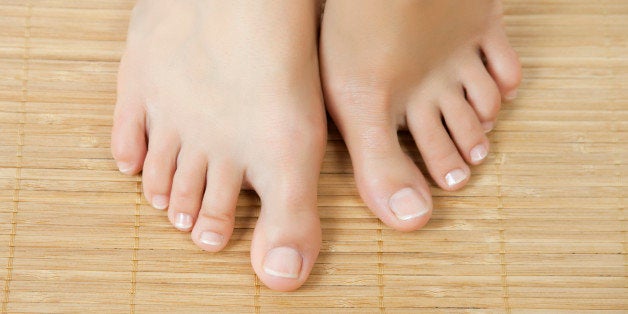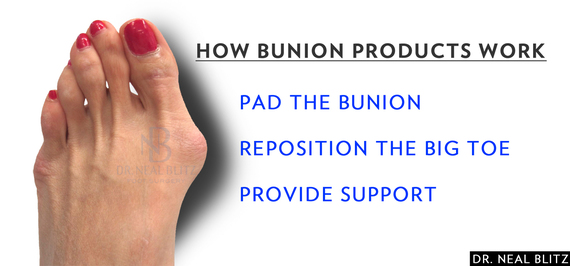
Those wishing to avoid bunion surgery often search for the best product to get rid of the boney prominence at the base of the big toe. Because a bunion is a structural malalignment problem at the big toe joint, a majority of products are aimed at alleviating the symptoms. Some products address the bone position but act to limit progression rather than cause reversal. The only method to truly correct a bunion is with bunion surgery, but much can be done to manage the symptoms and avoid surgery.
1. Bunion Pad
Most symptoms of bunion involve pressure from the shoe against the bunion region. This often leads to direct pain overlying the bunion, swelling, redness and/or blistering. Placing a barrier between the bunion and skin, better known as a bunion pad, can alleviate the irritation. Bunion pads can be made with simple felt or moleskin, and can be placed directly over the bunion region. Gel pads are also available as a more durable option and are reuseable. Bunion pads can be helpful for all size bunions, though are probably more effective for mild to moderate bunions.
2. Toe Spacer
Placing a pad or silicone between the big toe and second toe will provide relief when pressure builds up against the second toe, and will push the big toe in a more normal alignment. Gel spacers are durable and may have loops that secure it to the big toe or second toe. Toe spacers are best when the big toe is deviated, and in the early stages of bunions, before the big toe becomes more fixed in its position.
3. Arch Supports
Arch supports have long been used in the treatment of bunions. Bunions have been associated with flat feet and instability of the arch. As such, providing structural support is thought to keep the bones in better alignment, and limiting bunions from progressing. Over the counter arch supports are a good first treatment option. Custom doctor prescribed arch supports that are molded to your foot are may offer superior support.
4. Bunion Splints
A bunion splint is a device that is typically worn at night (while sleeping) that physically pushes the big toe back into normal alignment. There are several variations of bunion splints, some more rigid than other and a variety of designs. There are some that push the big toe over while other pull the big toe over. It's most important to find one that is comfortable for your foot since it's worn for several hours while sleeping. Bunion splints don't work overnight and are a long term management solution. They likely won't reverse the bunion but can halt progression of the bunion.
How Long Should One Try Bunion Products?
Most people try various bunion products prior to considering surgery. Because each of the products work in various ways, it may a worthwhile to try a few different products. Some bunions are quite amenable to bunion products whereas other continue to provide ongoing discomfort. Some people are able to manage their bunion symptoms their entire life, whereas others cannot.
When To Consider Bunion Surgery?
The decision to proceed with bunion surgery is different for every patient and generally involves: ongoing pain, limitation of activity, limited shoe, and/or worsening structural problem. Surgery for bunions varies depending on the size of the bunion and method chosen to correct it. Smaller bunion surgery is much less involved when compared to correcting a large bunion in terms of the amount of surgical work and recovery. Generally, small bunions allow for walking in a small surgical shoe until the bone mends (six weeks), whereas large bunions historically require casts and crutches for six weeks. Modern techniques performed by some surgeons allow immediate weightbearing after bunion surgery regardless of the size of the bunion.
Nonetheless, the above bunion products can be effective at keeping your bunion at bay.
Dr. Neal Blitz
Creator of the Bunionplasty(R)
Reconstructive Foot & Ankle Surgery
New York City
Other HuffPost Reading: Walking After Bunion Surgery: Is It Possible?
To learn more about Bunion Surgery NYC, please visit www.BunionSurgeryNY.com
